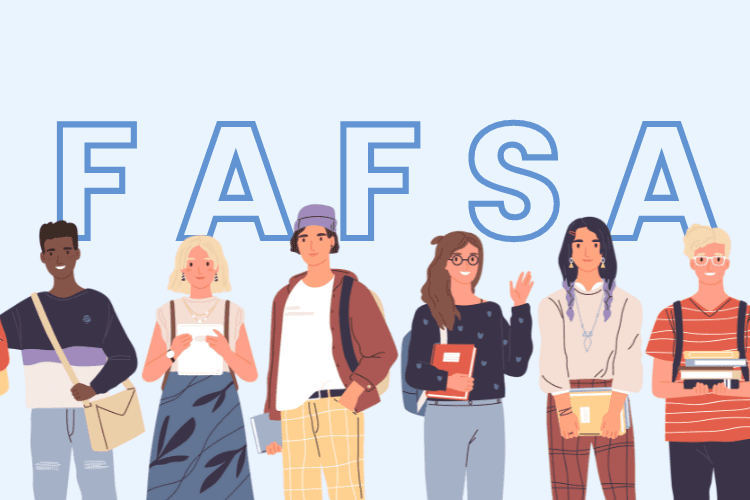FAFSA Opening in December: The Costly Mistakes You Don’t Want To Make

If you were all set to complete the Free Application for Federal Student Aid (FAFSA) in October and it never came, that’s because it now has a new date for launching by the end of December. You may have breathed a sigh of relief knowing you didn’t have to deal with it, as the FAFSA is not the easiest application to contend with.
The good news is avoiding some common mistakes can make your FAFSA experience a lot easier, quicker, and beneficial on the receiving end. Keep reading to learn the mistakes to avoid.
What Is FAFSA?
If you’re new to FAFSA, you won’t be for long when you have a student in your life. For Juniors or Seniors in high school, completing the FAFSA will help determine how much financial aid and grant assistance the student will receive for their college education. It’s also the application for Federal Work Study funds, federal student loans, and the Federal Pell Grant. The form has extensive questions about the student’s and parents’ financial situation and can take up to an hour to complete.
The FAFSA is usually available to complete on October 1 of each year; however, the 2024-25 school year form will be available by the end of December 2023.
7 Mistakes To Avoid When Completing the FAFSA
Given the complexity of the FAFSA, it can be easy for mistakes to happen. But mistakes can be costly and make the difference in getting a little or much more financial assistance. Here are seven mistakes to avoid when completing the FAFSA.
1. Not Completing the Form
The FAFSA process can be intimidating and cause anyone who comes in contact with it to run the other way. However, it is in your best interest to tackle the daunting task. Not doing so could be a costly mistake. There’s also the decision you’ve come to, in which you believe that your child won’t be eligible for any money. Whether you believe that or not, it is highly recommended that you take the time to complete the form. Firstly, there’s no income cut-off. Secondly, other factors, like the size of your family and your student’s year in school, are taken into consideration.
2. Not Getting Your FSA ID in Time
If you’re new to the FAFSA process, please adhere to this advice. Get your StudentAid.gov account username and password, otherwise known as FSA ID, before you even start filling out your form. It could take up to three days to get your FSA ID, and it’s needed to sign your form once it’s completed.
3. Not Using the IRS Data Retrieval Tool (DRT)
The FAFSA asks for tax information from one or two years prior. Sometimes, it’s difficult to know or understand specifically what the form requires of you in that regard. Rather than guessing or taking days or weeks to put your hands on the appropriate information, it’s easier to use the IRS Data Retrieval Tool (DRT). When you use the IRS DRT, it will automatically populate certain fields. Using the IRS DRT saves time and reduces the errors that could cause you a costly mistake, as this financial information is critical to your student’s award amount. Not everyone is eligible to use this tool, so if you see the “Proceed to the IRS” button on your online form, click on it.
4. Not Listing the Maximum Number of Colleges
Even if your student only has their mind set on one college, it’s still a good idea to list as many colleges as you can. The form will allow you to add up to 10 schools. The schools will have no way of knowing what other school you’ve added, so that won’t affect the output of the award. If you’re unsure where you want to go, it’s recommended to list up to 10 schools. Sometimes the decision of where to go is based on the school you’ll have to pay the least money to. Not all results for every school you apply to will be the same. So, don’t make the mistake of only applying to one school!
If it ends up that you don’t get accepted to a school that was added, you can easily remove it and replace it with another one.
5. Filling It In Incorrectly or Omitting Information
Although filling out the FAFSA may already seem daunting, take the time to read carefully everything being asked of you on the form. Read through definitions if you’re not 100% sure what the question is asking of you, and ensure you don’t input incorrect data. Don’t omit any information or skip questions. Doing so only results in holding up your application and having to resubmit.
6. Not Signing the Form
It’s a common mistake to forget to sign the FAFSA form. It’s possible you forgot your FSA ID or the student and/or parent neglected to sign. Submitting your FAFSA unsigned stops the processing of the form, and you’re back at square one. If you forget your FSA ID, you can select the “Forgot My Username” button or “Forgot My Password” to retrieve it. If you neglected to get the FSA ID, there should be an option to create one.
7. Missing the Deadline
It is highly recommended to start on the FAFSA the first day it becomes available, as it may not be easy to understand, especially if it’s your first time. In addition, not all colleges have the same FAFSA deadline. In order to qualify for their state aid or their school’s money, you’ll need to get the application to them before their deadline. School’s deadlines range from ASAP after the FAFSA becomes available to much later. The sooner you get your form in, the sooner you know what you qualify for. Also, the earlier you apply, the more likely you are to get the maximum amount of assistance you’re entitled to since financial aid is limited. Schools usually issue it out on a first-come, first-served basis.
The Bottom Line
I don’t know of any parent who looks forward to completing the FAFSA, but the process is warranted, especially if it helps your student pay for college. Avoiding these common mistakes will not only make the process go smoother but also possibly lighten your college tuition burden. Remember to renew your FAFSA information yearly!
Read More:










